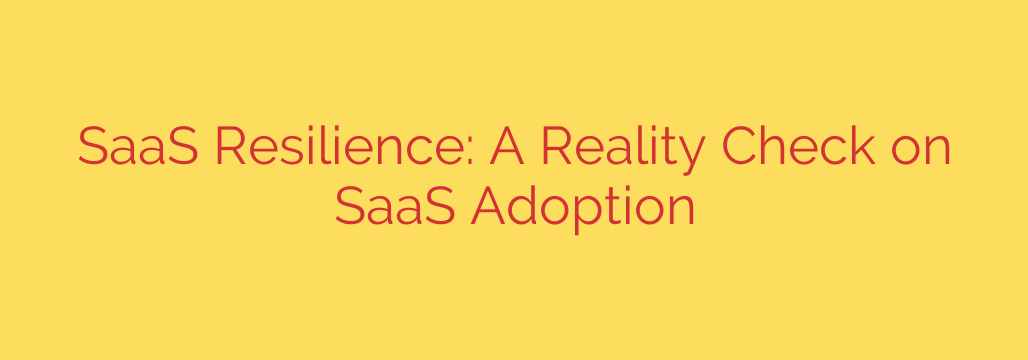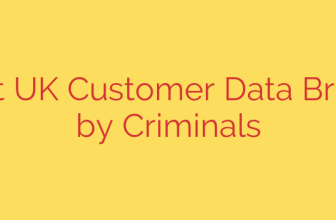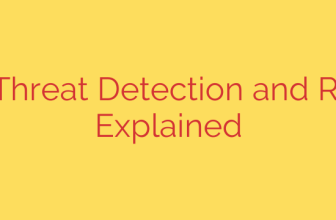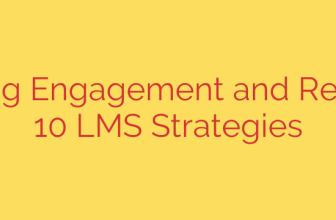
The Double-Edged Sword of SaaS: Navigating the Security Risks of Modern Cloud Adoption
Software-as-a-Service (SaaS) applications have revolutionized the modern workplace. From collaboration tools and CRMs to HR platforms, these cloud-based solutions offer unparalleled flexibility, scalability, and efficiency. It’s no surprise that businesses are adopting them at a breakneck pace.
But this rapid adoption hides a critical vulnerability. While organizations embrace the benefits, many overlook the significant security responsibilities that come with them. The convenience of SaaS can create a dangerous illusion of security, leaving companies exposed to data breaches, compliance violations, and operational disruptions.
This is the reality check every business needs. To truly leverage the power of SaaS, you must understand and actively manage its inherent risks.
The Myth of “Set It and Forget It” Security
One of the most pervasive misconceptions about SaaS is that the provider handles all aspects of security. While providers like Microsoft, Salesforce, and Google invest heavily in securing their infrastructure, their responsibility ends at a certain point. This crucial boundary is defined by the Shared Responsibility Model.
Think of it like renting a secure apartment building. The landlord is responsible for the building’s main entrance, the security guards, and the structural integrity of your unit. However, you are solely responsible for locking your own apartment door, managing who gets a key, and securing the valuables inside.
In the SaaS world:
- The SaaS Provider is responsible for: Securing the application itself, its underlying infrastructure, and its global network.
- You (the customer) are responsible for: Managing user access and permissions, configuring security settings correctly, and protecting the data you put into the application.
Failing to manage your side of this responsibility is one of the leading causes of cloud-based data breaches.
Top SaaS Security Threats Your Business Faces Today
As your organization’s SaaS footprint expands, so does your attack surface. Security and IT teams are often stretched thin, unable to keep up with the dozens or even hundreds of applications in use. Here are the most critical threats to watch for:
Critical Security Misconfigurations: Every SaaS application has a complex array of security settings. Many are shipped with default configurations that prioritize ease of use over security. A single misconfigured setting—like a publicly shared folder or an overly permissive API key—can expose sensitive company data to the entire internet.
Identity and Access Management (IAM) Sprawl: The ease of onboarding new SaaS apps often leads to a chaotic web of user permissions. Employees may be granted excessive access, and former employees may retain access long after they’ve left the company. Without centralized control, it’s nearly impossible to confidently answer the question: “Who has access to what?”
Unsanctioned “Shadow IT” Applications: When employees sign up for and use applications without IT approval, it creates massive blind spots. These “shadow IT” apps are not vetted for security, are not monitored, and often hold sensitive corporate data. These unauthorized apps create significant data leakage risks and undermine your entire security posture.
Data Leakage and Compliance Risks: The combination of misconfigurations, uncontrolled access, and shadow IT makes accidental data exposure almost inevitable. For organizations subject to regulations like GDPR, HIPAA, or CCPA, this can lead to severe financial penalties, legal action, and irreparable reputational damage.
Building SaaS Resilience: An Actionable Security Checklist
Protecting your organization requires a proactive, not reactive, approach to SaaS security. You cannot simply trust default settings or assume your data is safe. True SaaS resilience is built on a foundation of visibility, control, and continuous monitoring.
Here are essential steps to secure your SaaS environment:
Gain Full Visibility: You can’t protect what you can’t see. The first step is to discover every single SaaS application being used across your organization, including unsanctioned shadow IT. This gives you a complete inventory of your SaaS footprint.
Enforce the Principle of Least Privilege: Ensure that every user has only the minimum level of access required to perform their job. This simple principle dramatically reduces the potential damage from a compromised account. Regularly review and revoke unnecessary permissions.
Automate Security Posture Management: Manually checking the security settings of hundreds of applications is impossible. Implement a SaaS Security Posture Management (SSPM) solution to continuously monitor your SaaS stack. These tools automatically detect misconfigurations, identify risky user behavior, and provide remediation guidance.
Standardize Onboarding and Offboarding: Create a formal process for bringing new SaaS applications into your environment. This should include a security review and the creation of a baseline secure configuration. Likewise, implement a rigorous offboarding process to ensure all access is immediately revoked when an employee leaves.
Conduct Regular Audits and User Training: Security is an ongoing process. Regularly audit your SaaS configurations and user permissions. Furthermore, train your employees to be your first line of defense by educating them on the risks of shadow IT, phishing attacks, and proper data handling.
By shifting from a passive consumer to an active manager of your SaaS security, you can harness the incredible power of the cloud without falling victim to its risks. True SaaS resilience isn’t about avoiding cloud applications; it’s about mastering their security.
Source: https://dcig.com/2025/10/hycu-state-saas-resilience-reality-check/








